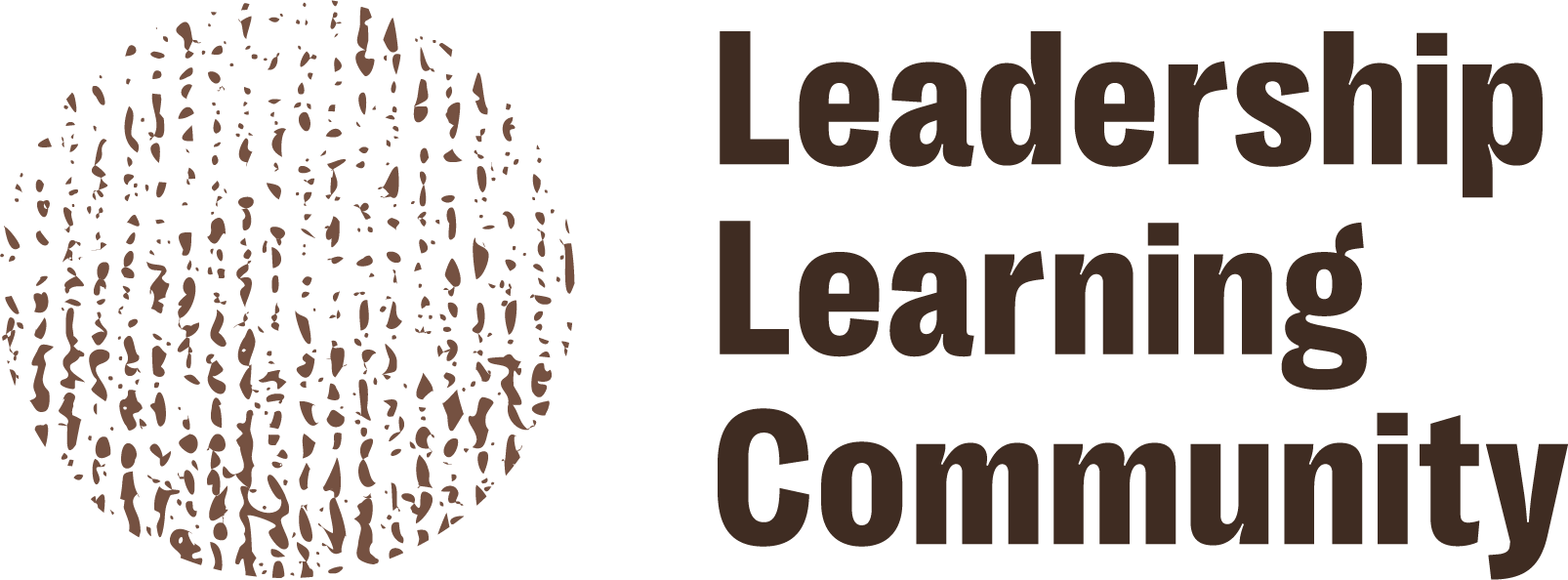[Our blog below attempts to be fun, light, and playful. We hope it offers a bit of respite from the heavy and grief-stricken hearts we are all holding right now.]
It’s spooky season and a good time to share about the scariest topic we can think of in the leadership field: distributed leadership. LLC works with leaders in many formations, including positional or hierarchical leadership, shared leadership like the co-executive director model, and distributed leadership. We often get asked about our co-executive director model, but did you know that we’ve been slowly shifting our internal governance to more distributed leadership as well? Today, we share six scary things about shared and distributed leadership.
First, some brief definitions. Positional leadership is often what we think of as a traditional hierarchical leadership model. One person at the top holds the knowledge and makes the decisions for the organization. Shared leadership refers to the Co-ED relationship, an ED and CEO, co-chairs, or a shared role like co-deputy directors. When we say distributed leadership, we mean there is more leadership throughout the organization in that other positions are activated to contribute to decision-making with agency and power. It could be a reference to a totally flat organization, but it doesn’t have to be. Distributed leadership is a practice towards that end of the spectrum. Different organizations will need different leadership depending on what they do and where they are headed. For those who are headed towards equity and liberation, we believe that it’s worth exploring shared and distributed leadership models.
What’s scary about shared and distributed leadership?
1. The scary unknown: What is this, and what if it doesn’t work? What if we don’t get anything done? What if it costs too much? We’ve mostly been taught how to function with lone-hero models of hierarchical leadership. Familiarity has a power to it. Even when a single leader lets us down or runs an organization aground, we don’t question this form of leadership. Distributing power and leadership in organizations requires us to move in less prescriptive, well-known ways. Maybe this means fewer templates and assurances of success. For us, an adaptive challenge means we can learn in other ways, such as from peers, from being intentional and slow-moving, and from staying open to reevaluating, realigning, and readjusting as needed. In practice, we feel like distributed leadership does eventually make things easier and better. There are only so many things we are good at individually; together, there seems to be exponential growth in our abilities and skills.
Practice: Learn about different leadership models from others who are already practicing what you’re seeking or exploring. Ericka and Nikki are open to sharing our experiences as well. Let us know if you’d like to connect.
2. Trust: Deep trust is needed between leaders, and that is hard to cultivate. After all, relationships are fragile and require tending. Sometimes our hearts are tender and require care. Sometimes we move with urgency and neglect to give critical attention that is needed for trust. Shared and distributed leadership requires us to act in intentional ways and trust that there is enough space for everyone to shine. What relationships do you already tend to that nurture trust? What values, principles, habits, and rituals reinforce this in your own life?
Practice: In our co-ED relationship, Nikki and Ericka work on trust building by investing time to get to know each other, our values, and the future worlds we are dreaming up. We have weekly check-ins for 30-minutes and weekly workspaces for about 2 hours a week. Once a month, we engage in 90-minute partnership coaching. In particular, through our 30-minute check-ins, we spend time getting to know the important things about each other, we joke, we cry, we talk about the relationship we are trying to honor and grow, and we also practice having boundaries with each other and our work. This is an investment of less than 3 hours a week in not only trust building but in collaborative work that has allowed us to move swiftly with strategy.
3. Power: One of the clearest whys we have on sharing and distributing leadership is because it is the practice of sharing and distributing power. Positional power can be seen as protection while sharing power requires vulnerability. Some people experience sharing power as removing armor. It is scary to lose power, and it can also be scary to build it. Moreover, sharing power is different from gifting power because by sharing, you have to acknowledge that the power belongs to the group, not just you as the “leader.” After spending years working yourself up a figurative power ladder, moving to a distributed model may feel like a loss rather than an opportunity. It might feel slow-paced rather than efficient and nimble. It might take a lot of work, but it might also lead to intergenerational, diverse, and liberatory leadership.
Practice: Understand your values as an individual and as an organization. What are your deeply held beliefs about power? What are the truths you know about power? What kind of future are you imagining for yourself, your organization, and your community? What must happen to align your values to the future you wish to create?
Practice: Work circles. Have a committee for each major area of work rather than a sole director who leads it. A skilled staff tends to lead the circle, but by including others on the committee, you’ll build in redundancy of information sharing and growth of skills across the organization. LLC is organized in four circles: (1) Strategy/Development/Learning, (2) Liberatory Operations, (3) Liberatory Programs, and (4) Communications.
4. Risks Like Conflict and Accountability: There are real risks in any change work, especially changes that deviate from the dominant norms of our society, like distributed leadership. What happens if there is conflict? Where does the buck stop? If there isn’t one ultimate decider, how will we make decisions? Nonprofits are set up with checks and balances. At the very least, for board members, the job of oversight over the organization will remain the same regardless of the number of leaders you’re interacting with. If change feels like a risk you can’t take, know that examining your risk tolerance and creating an approach to generative conflict are muscles you can grow first. Our board co-chair, Ashok Regmi, uses a risk register at his organization. LLC is trying this out as well as taking a learning stance on our change work.
Practice: Practice mitigating risk with a learning stance. This is our strategy for all change management work. We purposefully build in time for reflections on the change we are going through using periodic surveys and/or discussions at staff meetings so we can acknowledge, affirm, and address the change and transformation we are going through. Some questions you may ask are: (1) What is working? (2) What’s asking for attention? (3) Why is this important? (4) What are the roles involved, and are they evolving?
Practice: At LLC, we use a pilot/co-pilot/contributor framework to help us understand who is leading a particular project and is ultimately accountable for moving it forward. Pilots are accountable for bringing the project to completion. Co-pilots are able to do it too, if and when needed. Contributors support the project. These roles mean that anyone from our team can lead and is not reliant on positional power. For example, a coordinator can pilot a strategy/project that a co-director is co-piloting too.
5. The Monster at the end of the book is you: There are lots to unpack in yourself, like ego work, internal racism, money trauma, assumptions, fears, self-esteem, special talents, interests, and more. You must be able to see yourself clearly, in order to be in leadership with others.
Resources:
- Advice about partnerships from coach Belma Gonzales includes, “Be good individual people first – utilizing the 8 Cs: Compassion, Creativity, Curiosity, Confidence, Courage, Calm, Connectedness, and Clarity.”
- Inner work is essential. Learn more about why and how from ChangeElemental: https://changeelemental.org/centering-inner-work/
- Join a peer circle like our BIPOC Affinity Group.
- Learn from others through meetings and conferences like Living Liberation, where we unpack learnings from leaders who are moving towards a more just and liberated future.
The scariest thing for us is if we don’t start changing our leadership models. As we are seeing the world play out in horrific ways this month, we are reminded that the status quo is capitalism, extraction, colonialism, and violence. Dear colleagues and leaders, we have the opportunity to practice the world we are seeking. We must align values to actions and do just work in just, joyous, and liberatory ways now.




